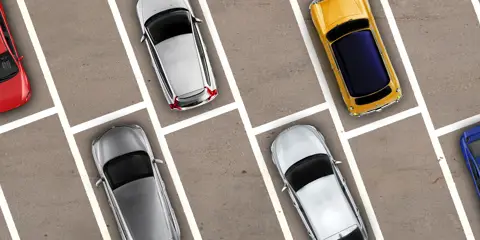-
Services
-
expand_more
Back
Services
-
-
expand_more
Back
Rates & Property
- Setting the Rates
- Revaluation and how it affects rates
- Rates Dates & Payment Options
- Changing your details
- Property Information Search
- Online Rates Payments
- Rates Rebates, Remission & Postponement
- Short-Term Visitor Accommodation
- Queenstown CBD Transport Rate for Queenstown Town Centre Properties
- Wastewater Rates for Cardrona
- Other Information
- Rates FAQs
-
-
expand_more
Back
Rubbish & Recycling
- How we recycle in the Queenstown Lakes District
- Cut your waste
- Commercial Services
- Public place litter bins and illegal dumping
- Rubbish & Recycling Collection
- Recycling Centres
- Transfer Stations
- Solid Waste Assessment
- Waste Minimisation Community Fund
- Waste Minimisation for Businesses
- Zero Waste Events
- Green and food waste
- Construction and demolition waste
-
-
expand_more
Back
Resource Consents
- Do I need a resource consent?
- Change, extend or surrender a resource consent
- Before you apply
- Apply for a resource consent
- Non-compliance & monitoring
- Notified consents
- Land Developments and Subdivisions
- Need help?
- Current resource consents
- eDocs
- FAQs
- Practice notes and guidance
-
-
expand_more
Back
Alcohol Licensing
- Alcohol Public Notices
- Find the right alcohol licence and apply
- Alcohol licence fee calculator
- Renew and/or vary your alcohol licence
- Manager's certificates
- Legal requirements for licence holders
- District Licensing Committee decisions
- ARLA annual report
- Alcohol-Free Areas In Public Places
- Have your say on alcohol licence applications
- All alcohol licensing forms
- Gambling Information
-
-
Do It Online
-
expand_more
Back
Do It Online
-
-
expand_more
Back
Registrations
- Register your Dog
- Register for a transfer or refund of dog registration fee
- Renewal for Campgrounds and Offensive Trade Registrations
- Activities in a Public Place - Registration/Application Form
- Register as a Homestay
- Register as Residential Visitor Accommodation
- Register for our public notification list
- Register to speak at Public Forum
- Register for Kerbside Collection Services
- No Spray Register
-
Community
Community
Ngā Hapori
- Summerdaze
- Newcomers Guide
- Welcoming Communities
- Arts, Culture and Heritage
- Community Connect
- Citizenship Ceremonies
- Community Associations and Groups
- Community Funding
- Community Research
- Community Wellbeing
- Economic Development
- Emergency Management
- Energy Saving Tips
- Event Planning and Venues
- Manaaki
- Managing the risk of wildfire
- Māori Community
- Population and Demand
- Tuia Programme
- Venue Hire

Summerdaze
A collection of events happening district-wide over the summer months.
-
Recreation
Recreation
Kā mahi a te rēhia
- Queenstown Events Centre
- Wānaka Recreation Centre
- Paetara Aspiring Central
- Swim
- Learn to Swim
- Golf
- Kids' Recreation
- Sport & Rec Venues and Contacts
- Courts and Fields
- Memberships - Join Today
- Join the Sport & Rec Team
- Responsible Camping
- Parks and Walkways
- Lakes and Boating
- Mountain Biking
- Horse Riding
- Splash Café
- Physiotherapy
- Playgrounds
- School Holiday Programmes
- This Is Sport & Recreation

Arrowtown Memorial Pool
Arrowtown Memorial Pool will open for summer fun from Saturday 29 November.
-
Your Council
Your Council
Te Kaunihera ā-rohe
- News
- Newsletter Archive
- Careers
- Consultations
- Council Documents
- Council Meetings
- Council Projects
- User Fees and Charges
- Climate Change and Biodiversity
- District Plan
- Elected Members
- Elections
- Media Centre
- Our Strategic Framework
- LGOIMA (information) requests
- Public Notices
- Sister Cities
- Fast-track Approvals Act

Climate & Biodiversity Plan
Read our latest plan which was adopted by Full Council on Thursday 31 July 2025.
-
expand_more
Back
Your Council
-
-
expand_more
Back
Council Documents
- Long Term Plan (LTP)
- Archived Agendas & Minutes
- Annual Plans
- Annual Reports
- Asset Management Plans
- Awarded Council Contracts
- Bylaws
- Capex Quarterly Update
- Monthly Reports
- National Policy Statement - Urban Development 2020 (NPS-UD)
- Policies
- Pre-election reports
- Queenstown Lakes Spatial Plan
- Reserve Management Plans
- Section 10A Reports
- Small Community Plans
- Strategies and Publications
- Submissions from QLDC
-
-
expand_more
Back
Council Projects
- Project Tohu
- Queenstown Town Centre Arterial
- McPhee Park Playground
- Blue-Green Network Plan
- Frankton Track Wastewater Upgrades
- Aubrey Road Wastewater Pipe Upgrades
- Luggate Water Upgrades
- Kingston Infrastructure Works
- Queenstown Town Centre Street Upgrades
- Way To Go
- Our Water Done Well
- Upper Clutha Wastewater Conveyance Scheme
- Shotover Wastewater Treatment Plant Stage 3 upgrades
- Short term approach for managing wastewater discharge
- Long term solution for Shotover Wastewater Treatment Plant
- Smart Water Meters Trial
- Environmental Monitoring System
- Lakeview Development
- Mount Iron Reserve Management Plan
- Project Manawa
- Wānaka Airport Certification
- Wānaka Airport Future Review
- Improving housing outcomes
- Queenstown Lakes Home Strategy
- Upgraded Two Mile UV Treatment Plant
- Frankton Road Watermain Upgrades
- Glenorchy Water Treatment Upgrades
- Upper Clutha Safety Improvements Programme
- Cardrona Valley Water Supply Scheme
- Schools to pool active travel route
- All-weather turf at Queenstown Events Centre
- Arthurs Point to Queenstown shared path
- 101 Ballantyne Road Masterplan
- Ballantyne Road Upgrade
- Cardrona Valley Wastewater Upgrade
- Glenorchy Reservoirs
- Frankton Campground
- Frankton Stormwater Upgrade
- Marine Parade Upgrades
- Mayoral Housing Affordability Taskforce
- Shotover Country Borefield and Treatment Plant
- Proposed Visitor Levy
- Ladies Mile Masterplan
- Recreation Ground Wastewater Pump Station and Rising Main
- Luggate Memorial Centre
- Te Kararo Queenstown Gardens
- Western Wānaka Water Supply Upgrade
- Shotover Bridge Water and Wastewater Main
- Te Tapuae Southern Corridor
- Glenorchy Marina Carpark
- Wānaka Lakefront Development Plan
- Travel Demand Management Programme
- Peninsula Bay Reserve Regeneration
- Merton Park Playground
-
-
expand_more
Back
District Plan
- Operative District Plan
- Proposed District Plan
- ePlans
- National Policy Statement-Urban Development (District Plan Amendments)
- Urban Intensification Variation
- Te Pūtahi Ladies Mile Variation
- Private Plan Change 1 - The Hills Resort Zone
- Upper Clutha Landscape Schedules Variation
- Priority Area Landscape Schedules
- Special Zones Review
- District Plan Maps
- A Guide to Plan Changes
- Planning Matters - Planning & Development Newsletter
Tuesday, 18 November 2025
Performance issues being addressed at Wānaka wastewater treatment plant
QLDC is advising the community of performance challenges at Project Pure Wastewater Treatment Plant/

Queenstown Lakes District Council (QLDC) is advising the community of performance challenges at Project Pure Wastewater Treatment Plant in Wānaka during recent upgrade works, resulting in some ponding of the disposal area, surface run-off from the site, and total Nitrogen within treated wastewater exceeding consent requirements.
QLDC General Manager Property & Infrastructure, Tony Avery acknowledged that the situation was unfortunate and would be unwelcome to many.
“We’ve been busy working to improve both the efficiency and resilience of Project Pure by replacing aeration equipment in two older reactor tanks on site, an activity made possible by construction of the facility’s third reactor completed early 2024,” said Mr Avery.
“There was always a risk that some parts of the facility’s treatment process would be negatively impacted while carrying out these significant upgrades. To reduce as much risk as possible, works were carefully planned to take place during low flow periods and operational teams implemented several mitigation strategies.”
Mr Avery added that despite the performance issues, upgrades at the facility were now complete and the quality of treated wastewater was starting to improve.
QLDC Mayor John Glover commented “As many of you know, being proactive around releasing information, even when that is not good news, is very important to your new Council and accordingly I have asked for this media release to be made. As governors, we will need to review what has happened to fully understand why and especially in the context of regulatory compliance failures at Shotover and Hāwea treatment plants.”
The upgrades at Project Pure WWTP involved taking one of the older reactors offline for inspection and upgrades while the remaining two reactors continued to function. Once complete, it was returned to operation before the second older reactor was taken offline.
Work at the facility ensured all three reactors now feature the latest aeration technology, which is more efficient and reduces electricity consumption. The new aeration grids can be removed for inspection while reactor tanks remain in service, helping to safeguard the treatment process against future disruption.
Reactor-2 was successfully upgraded in July 2025, and Project Pure operated on three reactors for a period to confirm performance before proceeding with Reactor-1.
However, while upgrading Reactor-1, higher flows from winter school holidays and heavy rain events placed strain on the facility’s biological treatment process while only two reactors were available. This led to treated wastewater exceeding the consent requirement for Total Nitrogen (an 80th percentile of 12 mg/l), periods where surface ponding occurred across the facility’s disposal fields, and surface run-off from the site during heavy rain at the end of October.
Biological processes used to treat wastewater rely on the establishment of a healthy collection of microbes to reduce organic and nutrient content within wastewater. When healthy, those microbes ‘settle’ and are not carried further along to other steps in the treatment process.
When these biological processes become stressed, those microbes do not settle as effectively, increasing organic and nutrient content within treated wastewater and contributing to blockages downstream in disposal fields.
Mr Avery acknowledged ponding within Project Pure’s disposal fields would trigger comparisons to issues experienced at Shotover Wastewater Treatment Plant in the past, but assured the community the two disposal solutions were different from each other, and no long-term problems were expected.
“Project Pure’s fields have been operating successfully for approximately 15 years now, have more modest loading rates, and discharge through free-draining soils well above groundwater,” said Mr Avery.
“We are investigating the effects of the recent events on the disposal fields and will keep the community informed as we learn more about any remediation activities required. With upgrades now complete at Project Pure and all three reactors operating, we’re already seeing the quality of treated wastewater improving despite biological processes needing several weeks to stabilise.”
The performance issues were raised to Otago Regional Council (ORC) immediately, and QLDC expects findings from its investigation shortly.
ENDS | KUA MUTU.
Media contact: communications@qldc.govt.nz or call 03 441 1802.
FURTHER INFORMATION | KĀ PĀROKO TĀPIRI:
Project Pure in Wānaka uses a Sequential Batch Reactor (SBR) process to treat wastewater before returning it to the environment.
-
Wastewater is piped to the treatment plant and screened to remove the bulk of non-biodegradable solids.
-
After screening, wastewater enters one of three ‘SBR’ reactor tanks (the full treatment process occurs within the one tank)
-
Within the reactor tank, the wastewater is subjected to periods of time with (aerobic) and without (anaerobic) oxygen, creating the necessary environment for the correct micro-organisms to flourish and perform the required treatment. These microbes digest organic matter in the wastewater, and clump together when healthy to enable separation from the liquid wastewater stream.
-
Wastewater within the tank is then allowed to settle, so micro-organisms can sink to the bottom of the tank and a clear layer of wastewater remains at the top of the tank.
-
The clear wastewater then receives filtration and ultraviolet (UV) disinfection before this treated water is discharged into a disposal field, where it soaks through gravels and safely returns to the environment.


